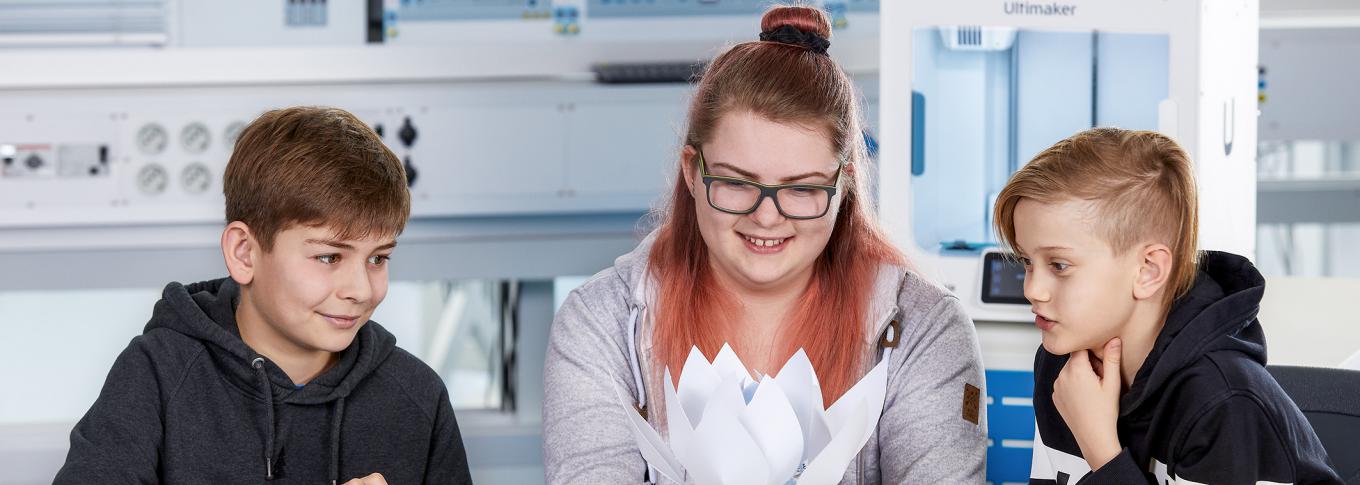
Bionic Flower: a bionically inspired robot flower
Festo Didactic presents a new product for the bionics didactic concept of Bionics4Education. What is new: the orientation towards the maker movement approach and the 4Cs. The aim is inspiring learners, finding new ways and solutions, dealing creatively with provided materials, and sharing these experiences with others to prepare them for the digital world of tomorrow.
Inspired by the plant world
The Bionic Flower is a construction kit inspired by the plant world. Festo Didactic developed the Bionic Flower following the models of mimosa plants and water lilies in cooperation with SkySpirit. The Bionic Flower opens and closes its petals as a reaction to external influences such as touch, proximity or light. These mechanisms can be discovered in a playful way by pupils in the classroom using sensors and control technology integrated in the Bionic Flower. The design, as well as the transfer of principles from the plant world, rounds off the teaching of curriculum topics in STEM education (Science, Technology, Engineering, and Maths). The topic of biodiversity can also be discussed in class.
Bionic work didactically prepared
One Bionic Flower can be used by up to three students at a recommended age of 10 and over. The petals contain the first bionic topic: the folding technique. The petals gain the necessary mechanical stiffness by folding. The mechanism for opening and closing the petals is electrically actuated with a stepper motor which opens and closes the petals one after the other. The movement and the light effects are controlled via Wi-Fi-enabled smartphones, tablets or PCs. If required, the microcontroller can be programmed with the graphic coding interface "Open Roberta". Experienced students can also program their Bionic Flower in C++. The code is open source. This enables teachers to teach technical content via a new, interdisciplinary educational path. Accompanying teaching material, as well as the assembly manual, can be downloaded free of charge from our website www.bionics4education.com.
An expanded approach to promoting valuable skills
Students learn different aspects of STEM with the Bionic Flower - in a digital, creative and interdisciplinary way. The Bionic Flower combines bionics and technical education and is thus based on the competencies of the 4Cs: collaboration, communication, critical thinking and creativity to empower learners for the digital world of tomorrow.
In addition, soft skills such as working in a team are reinforced.
New in the concept: the maker movement approach
The maker movement is based on the DIY (do it yourself) culture and the idea of finding new ways and solutions, dealing creatively with materials, and sharing these experiences with others. The Bionic Flower takes this approach and combines Maker Education and STEM Education. In addition to assembling the Bionic Flower, learners can customize and expand on the Bionic Flower by using 3D printers, other materials, hardware and software.
Festo Didactic is a leading provider of technical training and further education. The product and service portfolio offers customers integrated educational solutions in industrial automation topics. The wide range of products and services are aimed at vocational schools and universities, research centers and industrial customers. Festo Didactic is part of the globally oriented, independent family-owned company Festo with headquarters in Esslingen a. N. The 760 employees of Festo Didactic in 61 Festo national companies generated sales of EUR 140 million in 2022.




